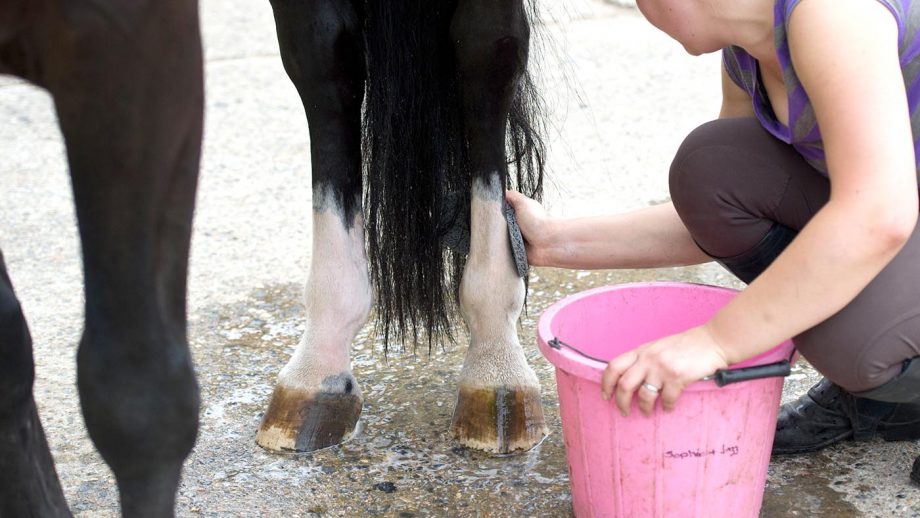The gentle giants of the equine world, Shire horses, are renowned for their incredible strength and imposing stature. These majestic creatures capture the hearts of horse enthusiasts and leave many wondering just how much weight a Shire horse can bear. In this comprehensive article, we take a closer look at the capacity of a Shire horse to carry weight, an insight into their historical context, and how these magnificent animals have been used throughout history, as well as in modern times. Understanding how much can a shire horse carry can provide a deeper appreciation for their capabilities and the best ways to care for them.

The History of Shire Horses
The Shire horse has a rich history that dates back to medieval England. Known primarily for their draft work, Shires were used in agriculture, and for pulling carts and coaches due to their robust build and strength. These horses were vital to the economy, plowing fields and transporting goods. The Shire’s impressive ability to carry weight made them indispensable in pre-industrialized societies.
The Physical Characteristics of Shire Horses
Shire horses are notable for their size, typically standing between 16 to 18 hands tall and weighing between 1,800 and 2,400 pounds. Their muscular build is a key factor in their strength, allowing them to carry and pull significant loads. The structure of their body, with powerful hindquarters and a broad back, supports their ability to perform various heavy-duty tasks.
Strength and Capacity
When discussing how much can a shire horse carry, it’s important to understand the limits of both weight carrying and pulling. Generally, a Shire horse can carry up to approximately 20% of its body weight on its back. This equates to about 360 to 480 pounds, depending on the horse’s own weight. However, these horses excel more significantly in pulling, where they can pull loads of over a ton with ease sometimes up to several tons, particularly when working in pairs or teams.
The Role of Shire Horses in Modern Times
Today, Shire horses are cherished not just for their work capacity but also for their beauty and docility. They are often seen in ceremonial roles, parades, and agricultural shows. Additionally, they are used in forestry work due to their ability to navigate and work in dense wooded areas without causing damage like machinery would.
Riding and Equestrian Use
Shire horses are gentle giants and are also used for horseback riding, despite their massive size. Understanding top riding gear is crucial for comfort and safety. Their calm demeanor makes them suitable even for beginner riders, although the tasks they perform today are less about carrying and more about enjoyment and companionship.
Considerations When Riding or Loading a Shire Horse
When using a Shire horse for riding or carrying loads, several factors must be taken into account, such as the horse’s health, age, and training. It is essential to ensure that the load does not exceed the recommended capacity to prevent injuries. Regular check-ups and a proper diet are crucial to maintain their health. For more on preventing injuries, see injury prevention tips.
Training and Care
Caring for a Shire horse involves a mix of physical training and proper nutrition. Their diet should be balanced with an adequate amount of protein and vitamins to maintain their muscle mass and overall health. Daily exercise and ground training are important to keep them agile and fit for their tasks. You can find suitable exercises in groundwork exercises.
Safety and Gear
Safety is paramount when riding or working with Shire horses. Appropriate gear like saddles and harnesses designed for their size should be used to prevent discomfort and injuries. Knowing how to maintain riding gear is crucial in prolonging its life and effectiveness.
Addressing Common Health Issues
Like all large horses, Shires can be susceptible to conditions such as arthritis and hoof problems due to their size. Regular veterinary check-ups and knowing basic first aid are key to managing and preventing health issues. For more insights, visit horse first aid.
The Future of Shire Horses
While modern machinery has replaced much of the labor that Shire horses were historically relied upon for, there is a renewed interest in these horses for sustainable farming and eco-tourism. Their role in modern agriculture, though smaller, remains significant as environmentally-conscious farmers look to reduce their carbon footprint.
Conclusion
Understanding how much can a shire horse carry not only deepens our appreciation for these majestic animals but also reinforces the importance of proper care and management to maintain their health and longevity. Whether they are working on a farm, competing in shows, or simply enjoying a leisurely ride, Shire horses continue to be a treasured part of the equine world. Visit RSPCA for detailed care guidelines.

Frequently Asked Questions
1. What is the average lifespan of a Shire horse?
Shire horses typically have a lifespan of around 25 to 30 years, with proper care and nutrition.
2. How does a Shire horse’s carrying capacity compare to other breeds?
Compared to smaller horse breeds, Shire horses can carry more due to their larger size and muscular build. However, they are primarily suited for pulling rather than carrying.
3. Can Shire horses be used for competitive riding?
While not as common in competitive riding due to their size, Shire horses can participate in certain equestrian events and are valued for their strength and grace in parades and demonstrations.








